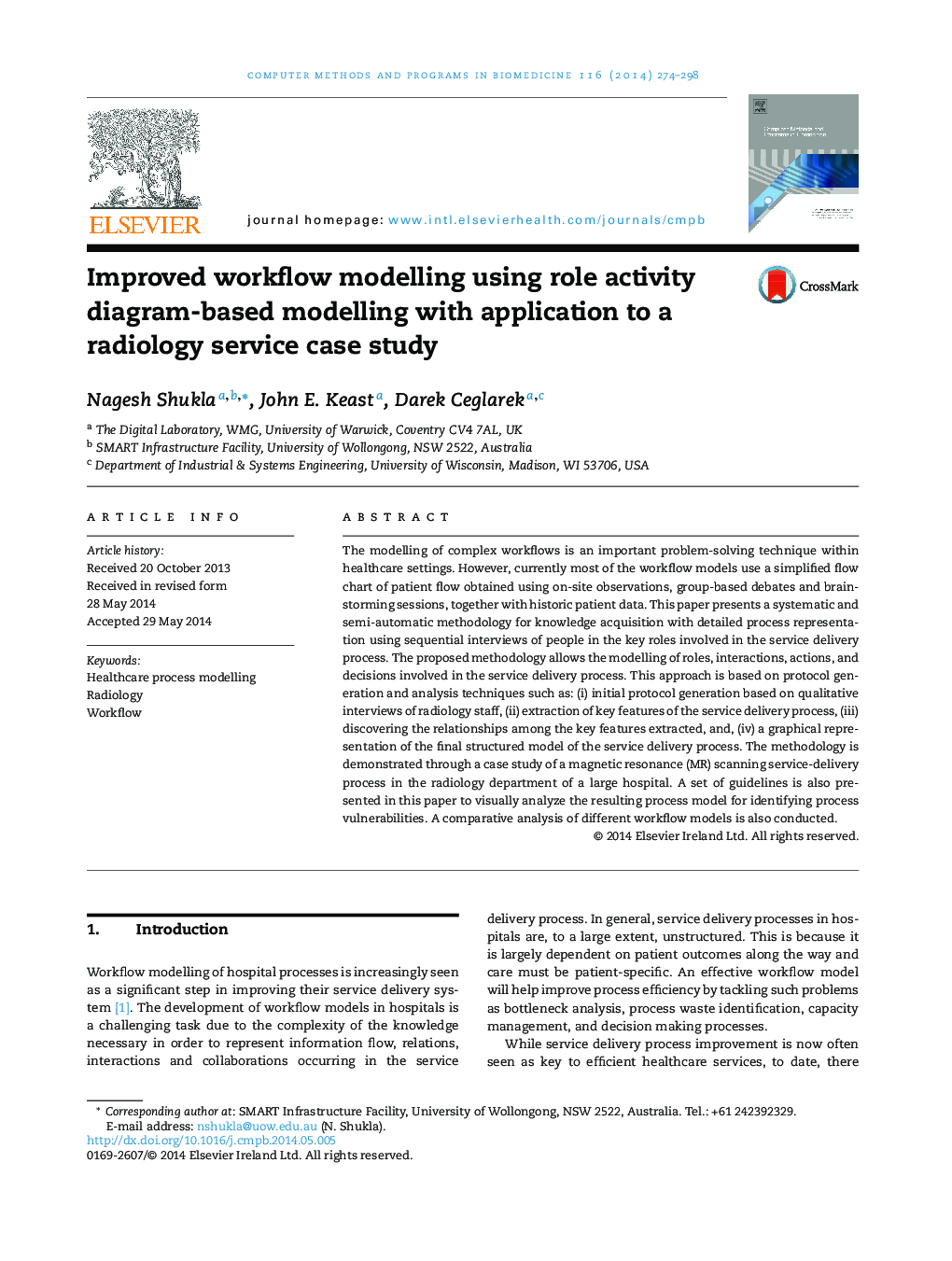| کد مقاله | کد نشریه | سال انتشار | مقاله انگلیسی | نسخه تمام متن |
|---|---|---|---|---|
| 466455 | 697843 | 2014 | 25 صفحه PDF | دانلود رایگان |
• Development of systematic knowledge acquisition and knowledge aggregation methodology based on staff interviews.
• Use of RAD based process models for representing process knowledge aggregated from staff interviews.
• Analysis of sensitive RAD structures for process issues identification.
• Application of proposed methodology to a real case study from radiology department of a large hospital.
The modelling of complex workflows is an important problem-solving technique within healthcare settings. However, currently most of the workflow models use a simplified flow chart of patient flow obtained using on-site observations, group-based debates and brainstorming sessions, together with historic patient data. This paper presents a systematic and semi-automatic methodology for knowledge acquisition with detailed process representation using sequential interviews of people in the key roles involved in the service delivery process. The proposed methodology allows the modelling of roles, interactions, actions, and decisions involved in the service delivery process. This approach is based on protocol generation and analysis techniques such as: (i) initial protocol generation based on qualitative interviews of radiology staff, (ii) extraction of key features of the service delivery process, (iii) discovering the relationships among the key features extracted, and, (iv) a graphical representation of the final structured model of the service delivery process. The methodology is demonstrated through a case study of a magnetic resonance (MR) scanning service-delivery process in the radiology department of a large hospital. A set of guidelines is also presented in this paper to visually analyze the resulting process model for identifying process vulnerabilities. A comparative analysis of different workflow models is also conducted.
Journal: Computer Methods and Programs in Biomedicine - Volume 116, Issue 3, October 2014, Pages 274–298
